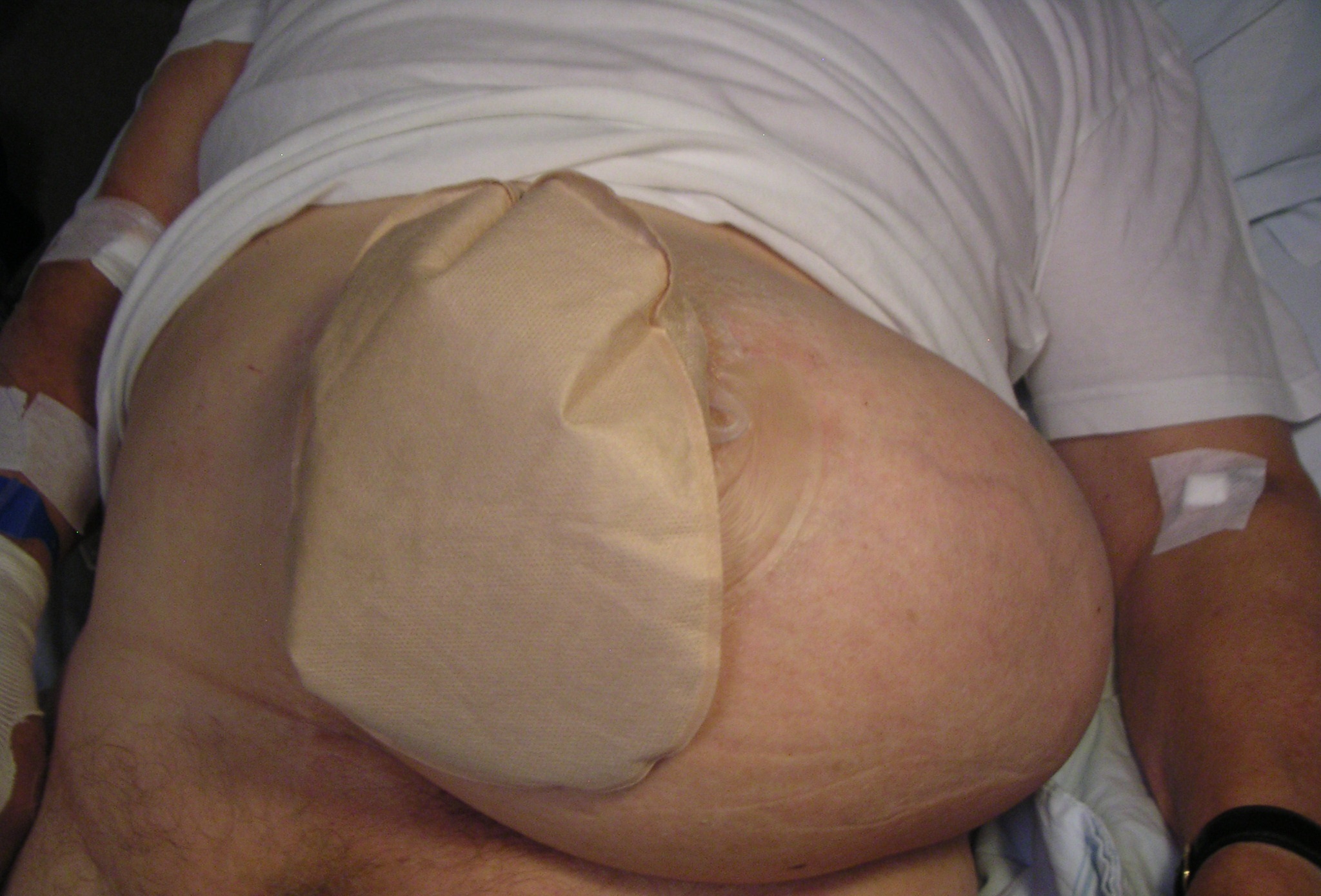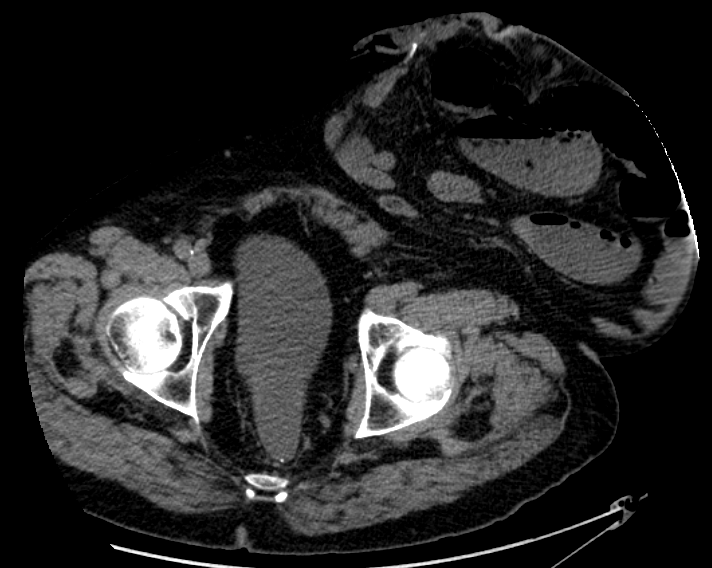Ostomy on:
[Wikipedia]
[Google]
[Amazon]
In


 Stomata are created in particular in surgical procedures involving the
Stomata are created in particular in surgical procedures involving the
"Surgical Stomas"
(
anatomy
Anatomy () is the branch of morphology concerned with the study of the internal structure of organisms and their parts. Anatomy is a branch of natural science that deals with the structural organization of living things. It is an old scien ...
, a stoma (: stomata or stomas) is any opening in the body. For example, a mouth
A mouth also referred to as the oral is the body orifice through which many animals ingest food and animal communication#Auditory, vocalize. The body cavity immediately behind the mouth opening, known as the oral cavity (or in Latin), is also t ...
, a nose
A nose is a sensory organ and respiratory structure in vertebrates. It consists of a nasal cavity inside the head, and an external nose on the face. The external nose houses the nostrils, or nares, a pair of tubes providing airflow through the ...
, and an anus
In mammals, invertebrates and most fish, the anus (: anuses or ani; from Latin, 'ring' or 'circle') is the external body orifice at the ''exit'' end of the digestive tract (bowel), i.e. the opposite end from the mouth. Its function is to facil ...
are natural stomata. Any hollow organ
Organ and organs may refer to:
Biology
* Organ (biology), a group of tissues organized to serve a common function
* Organ system, a collection of organs that function together to carry out specific functions within the body.
Musical instruments
...
can be manipulated into an artificial stoma as necessary. This includes the esophagus
The esophagus (American English), oesophagus (British English), or œsophagus (Œ, archaic spelling) (American and British English spelling differences#ae and oe, see spelling difference) all ; : ((o)e)(œ)sophagi or ((o)e)(œ)sophaguses), c ...
, stomach
The stomach is a muscular, hollow organ in the upper gastrointestinal tract of Human, humans and many other animals, including several invertebrates. The Ancient Greek name for the stomach is ''gaster'' which is used as ''gastric'' in medical t ...
, duodenum
The duodenum is the first section of the small intestine in most vertebrates, including mammals, reptiles, and birds. In mammals, it may be the principal site for iron absorption.
The duodenum precedes the jejunum and ileum and is the shortest p ...
, ileum
The ileum () is the final section of the small intestine in most higher vertebrates, including mammals, reptiles, and birds. In fish, the divisions of the small intestine are not as clear and the terms posterior intestine or distal intestine may ...
, colon, pleural cavity
The pleural cavity, or pleural space (or sometimes intrapleural space), is the potential space between the pleurae of the pleural sac that surrounds each lung. A small amount of serous pleural fluid is maintained in the pleural cavity to enabl ...
, ureters
The ureters are tubes composed of smooth muscle that transport urine from the kidneys to the urinary bladder. In an adult human, the ureters typically measure 20 to 30 centimeters in length and about 3 to 4 millimeters in diameter. They are lin ...
, urinary bladder
The bladder () is a hollow organ in humans and other vertebrates that stores urine from the Kidney (vertebrates), kidneys. In placental mammals, urine enters the bladder via the ureters and exits via the urethra during urination. In humans, the ...
, and renal pelvis
The renal pelvis or pelvis of the kidney is the funnel-like dilated part of the ureter in the kidney. It is formed by the convergence of the major calyces, acting as a funnel for urine flowing from the major calyces to the ureter. It has a mucous ...
. Such a stoma may be permanent or temporary.
Surgical procedures that involve the creation of an artificial stoma have names that typically end with the suffix "-ostomy", and the same names are also often used to refer to the stoma thus created. For example, the word " colostomy" often refers either to an artificial anus or the procedure that creates one. Accordingly, it is not unusual for a stoma to be called an ostomy (plural ostomies), as is the norm in wound, ostomy, and continence nursing.
Gastrointestinal stomata

 Stomata are created in particular in surgical procedures involving the
Stomata are created in particular in surgical procedures involving the gastrointestinal tract
The gastrointestinal tract (GI tract, digestive tract, alimentary canal) is the tract or passageway of the Digestion, digestive system that leads from the mouth to the anus. The tract is the largest of the body's systems, after the cardiovascula ...
(GIT) or gastrointestinal system (GIS). The GIT begins at the mouth or oral cavity and continues until its termination, which is the anus. Examples of gastrointestinal stomata include:
* Esophagostomy
* Gastrostomy
A gastrostomy is the creation of an artificial external opening into the stomach for nutritional support or gastric decompression.
Typically this would include an incision in the patient's epigastrium as part of a formal operation. When originall ...
(also see percutaneous endoscopic gastrostomy
Percutaneous endoscopic gastrostomy (PEG) is an endoscopic medical procedure in which a tube (PEG tube) is passed into a patient's stomach through the abdominal wall, most commonly to provide a means of feeding when oral intake is not adequate ...
)
* Cholecystostomy
* Choledochostomy
* Enteric:
** Cecostomy
** Colostomy
** Duodenostomy
** Ileostomy
** Jejunostomy
Jejunostomy is the surgical creation of an opening (stoma) through the skin at the front of the abdomen and the wall of the jejunum (part of the small intestine). It can be performed either endoscopically, or with open surgery.
A jejunostomy m ...
** Appendicostomy (see also continence appendicostomy)
One well-known form of an artificial stoma is a colostomy, which is a surgically created opening in the large intestine
The large intestine, also known as the large bowel, is the last part of the gastrointestinal tract and of the Digestion, digestive system in tetrapods. Water is absorbed here and the remaining waste material is stored in the rectum as feces befor ...
that allows the removal of feces
Feces (also known as faeces American and British English spelling differences#ae and oe, or fæces; : faex) are the solid or semi-solid remains of food that was not digested in the small intestine, and has been broken down by bacteria in the ...
out of the body, bypassing the rectum
The rectum (: rectums or recta) is the final straight portion of the large intestine in humans and some other mammals, and the gut in others. Before expulsion through the anus or cloaca, the rectum stores the feces temporarily. The adult ...
, to drain into a pouch or other collection device. This surgical
Surgery is a medical specialty that uses manual and instrumental techniques to diagnose or treat pathological conditions (e.g., trauma, disease, injury, malignancy), to alter bodily functions (e.g., malabsorption created by bariatric surgery ...
procedure is invoked usually as a result of and solution to disease in the GIT. The procedure involves bisecting this tube, usually between the later stage of the small intestine (ileum
The ileum () is the final section of the small intestine in most higher vertebrates, including mammals, reptiles, and birds. In fish, the divisions of the small intestine are not as clear and the terms posterior intestine or distal intestine may ...
) and the large intestine or colon, hence colostomy, and exiting it from the body in the abdominal region. The point of exiting is what is known as the stoma.
For greatest success and to minimize negative effects, it is preferable to perform this procedure as low down in the tract as possible, as this allows the maximal amount of natural digestion
Digestion is the breakdown of large insoluble food compounds into small water-soluble components so that they can be absorbed into the blood plasma. In certain organisms, these smaller substances are absorbed through the small intestine into th ...
to occur before eliminating fecal matter from the body. The stoma is usually covered with a removable pouching system (adhesive or mechanical) that collects and contains the output for later disposal. Modern pouching systems enable most individuals to resume normal activities and lifestyles after surgery, often with no outward physical evidence of the stoma or its pouching system.
When planning the position of the stoma, a stoma nurse should bear in mind the height of the person's waist and beltline so that clothes can fit as before. Also a peri-stomal hernia belt worn from the start can help prevent the stoma from developing a serious hernia problem.
Other examples of stomata
* Dacryocystorhinostomy * Sclerotomy *Tracheostomy
Tracheotomy (, ), or tracheostomy, is a surgical airway management procedure which consists of making an incision on the front of the neck to open a direct airway to the trachea. The resulting stoma (hole) can serve independently as an airway ...
* Urostomy (also see Ileal conduit urinary diversion)
** Nephrostomy
** Ureterostomy
** Vesicostomy ( cystostomy)
The historical practice of trepanation
Trepanning, also known as trepanation, trephination, trephining or making a burr hole (the verb ''trepan'' derives from Old French from Medieval Latin from Ancient Greek, Greek , literally "borer, auger"), is a surgical intervention in which a ...
was also a type of stoma.
See also
*List of surgeries by type
Many Surgery, surgical procedure names can be broken into parts to indicate the meaning. For example, in gastrectomy, "ectomy" is a suffix (linguistics), suffix meaning the removal of a part of the body. "Gastro-" means stomach. Thus, ''gastrectom ...
References
External links
"Surgical Stomas"
(
MeSH
Medical Subject Headings (MeSH) is a comprehensive controlled vocabulary for the purpose of indexing journal articles and books in the life sciences. It serves as a thesaurus of index terms that facilitates searching. Created and updated by th ...
)
{{Authority control
Gastroenterology
Surgery